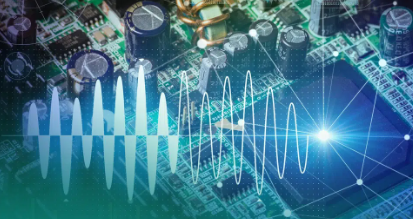Analog vs. Digital Signals – A Comprehensive Comparison
In the realm of electronics, the fundamental difference between analog vs digital signals underpins the foundation of modern technology. From audio transmission to data processing, these two signal types play pivotal roles in various applications, each with its unique characteristics and advantages. Delving into the nuances of analog and digital signals unveils their distinct features, applications, and the ongoing debate over which reigns supreme in today’s tech-driven world.

What are Analog and Digital Signals?
Analog Signals:
Analog signals are continuous and fluctuate infinitely within a range, representing physical quantities as a continuous waveform. They take on an infinite number of values within a specified range and are characterized by their smooth, wave-like forms. Examples include the varying voltage in a traditional phone call or the natural world’s continuous phenomena like sound waves and temperature changes.
Digital Signals:
Digital signals, in contrast, are discrete and represent information using binary code—combinations of 0s and 1s. These signals are highly precise, conveying data through distinct and separate values. They are integral to computers, smartphones, and most modern electronic devices, utilizing binary digits to transmit and process information.
FeaturesAnalog Signal:
Infinite Values: Analog signals possess an infinite range of values, offering a complete representation of the original information.
Susceptibility to Interference: They are more prone to interference and degradation over long distances due to environmental factors.
Smooth Continuity: Analog signals exhibit a smooth and continuous waveform, making them ideal for representing natural phenomena accurately.
Digital Signal:
Binary Representation: Digital signals are represented using binary digits (0s and 1s), enabling precise storage and transmission of information.
Immunity to Interference: They are more immune to noise and interference, ensuring data integrity over longer distances.
Ease of Processing: Digital signals facilitate easier and more accurate signal processing, manipulation, and transmission.
Applications and UsesAnalog Signal Applications:
Audio Transmission: Analog signals are prevalent in transmitting audio signals, delivering rich, continuous sound in traditional music players and analog communication systems.
Sensor Readings: Many sensors, like temperature and pressure sensors, produce analog signals to measure and convey real-world data.
Natural Phenomena Representation: Analog signals accurately represent natural occurrences such as light intensity, temperature changes, and more.
Digital Signal Applications:
Computing and Communication: Digital signals form the backbone of modern computing and communication systems, enabling high-speed data transmission and storage.
Media Storage and Playback: Digital signals facilitate the storage and playback of media files, including images, videos, and music, ensuring high fidelity and clarity.
Security and Encryption: Digital signals are crucial in encryption processes, ensuring secure communication and data protection.
Analog vs. Digital Signals – What are the Differences?Analog vs. Digital Signals
The comparison between analog and digital signals often sparks debates regarding superiority. Advocates of analog signals emphasize their ability to represent natural phenomena faithfully, especially in audio and sensory applications. On the other hand, digital signal proponents highlight the precision, ease of processing, and immunity to noise as key advantages.
ConclusionIn conclusion, both analog and digital signals play indispensable roles in various technological applications, each with its unique strengths and areas of application. While digital signals dominate modern electronics and computing due to their precision and robustness, analog signals continue to hold significance in accurately representing continuous, real-world phenomena.
在线留言询价
- 一周热料
- 紧缺物料秒杀
| 型号 | 品牌 | 询价 |
|---|---|---|
| CDZVT2R20B | ROHM Semiconductor | |
| BD71847AMWV-E2 | ROHM Semiconductor | |
| RB751G-40T2R | ROHM Semiconductor | |
| TL431ACLPR | Texas Instruments | |
| MC33074DR2G | onsemi |
| 型号 | 品牌 | 抢购 |
|---|---|---|
| IPZ40N04S5L4R8ATMA1 | Infineon Technologies | |
| BP3621 | ROHM Semiconductor | |
| ESR03EZPJ151 | ROHM Semiconductor | |
| TPS63050YFFR | Texas Instruments | |
| BU33JA2MNVX-CTL | ROHM Semiconductor | |
| STM32F429IGT6 | STMicroelectronics |
- 周排行榜
- 月排行榜
AMEYA360公众号二维码
识别二维码,即可关注


请输入下方图片中的验证码:






















